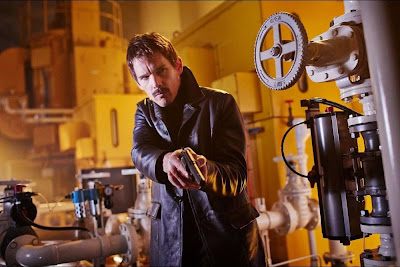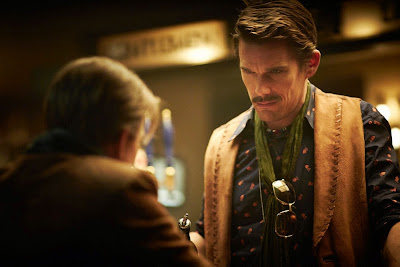Robert A. Heinlein is typically considered one of the grand masters of the so-called "Golden Age of Science Fiction," that period just before World War II when the genre began to take itself seriously as literature. The Golden Age writers were typically hard nosed about realistic science within the boundaries of what was then known. Sometimes, their rigor resulted in startling predictive powers. Mostly, they resulted in complicated problems for the characters in the stories. In many ways, Heinlein was the architect of this movement. He was the most popular writer in John W. Campbell's Astounding, the primary outlet for the Golden Age writers, and his mixture of plain-spoken Americana and futurism was the template for science fiction for the next two decades. His characters may have worked in outer space, but they smoked Luckies and chased girls like everyone else. Toward the end of the 1950s the landscape of literary science fiction began to change. Social sciences began to form as much of the background of future societies as the physical sciences. Writers like Philip K. Dick, Alfred Bester, and Cyril Kornbluth began to explore the effects of the future on the psychology of its characters rather than having those characters just act in response to plot. By the late fifties, a new crop of writers was waiting to upset the apple cart. Science fiction's "New Wave" was less beholden to science and more interested in literary values like character, theme, and language. Older writers, brought up on the technocratic Golden Age, either adapted or found other work. Robert Heinlein turned out to be particularly adaptable. His major novels of the 1960s are a fusion of the old and the new. The technological future is still there, but the problems are dramatically different. Heinlein's fiction turned inward.
Predestination (2014, directed by the Spierig Brothers) is the first film since Destination: Moon to approach Robert Heinlein on his own terms. It's a very different species of movie, though. The story it's based on, "...All You Zombies," is as close to the science fiction New Wave as Heinlein ever came, and this film reflects that pedigree. It's not a film that will wow you with technology or with its vision of the future. It's a dingy movie that exists as much in the past as it does in the future. Its central motivating idea--time travel--wasn't even novel in 1959, when the story was written, let alone in 2015. There are time travel stories without number these days. Instead, this is a movie about extrapolation from that idea, intent on pulling it inside out and twisting it almost to the point of breaking. Where previous films based on Heinlein have been cartoons, based only on the plots of his books and not their underlying ideas, this film dives into the core of what makes Heinlein's fiction so memorable in the first place. Perhaps, this is because it's faithful to its source material almost to a fault. Or perhaps it's because its source material isn't the rockets and warfare and aliens stuff that has attracted other filmmakers to Heinlein over the years. Instead, this is a film that dives into the interior of its characters and speculates on matters of identity and existence.
The plot of Predstination derives from an encounter between a bartender and a writer of magazine true confessions. They meet in 1970, during a period when a terrorist called "The Fizzle Bomber" is loose in the country. The writer, who calls himself "The Unmarried Mother," tells the bartender his story--the "strangest story you ever heard," he promises. And strange it is. "The Unmarried Mother" was born female, but never knew her mother, raised in a convent orphanage, grows up and meets a man who gets her with child. The child's father takes a powder and is never seen again and shortly afterward, her daughter is abducted. All the while, The Unmarried Mother--Jane--is training for the Space Corps. She's drummed out of the corps when the birth of her child reveals that her plumbing is intersexed. The birth wrecks her female reproductive organs, so the doctors encourage her to transition to male. Upon hearing this story, the Bartender promises Jane--now James--that he can take him to meet his father. The Bartender, it seems, is a temporal agent, charged with averting disasters before they happen. His task is to catch The Fizzle Bomber, but he has an ulterior motive for helping James. He's true to his word: he introduces him to his parents--and thing just get stranger from there...
One of the dominant symbols in Predestination is a ring carved to look like Ourouboros, the snake that devours its own tail. This is a film that's a closed loop. A Möbius strip, even. Like its source material, it's a film that's fundamentally solipsistic, in which the central characters essentially create their own realities. One of the last lines of the film--taken verbatim from the story--summarizes the implications of its chain of events:
"The Snake That Eats Its Own Tail Forever and Ever...I know where I came from--but where did all you zombies come from?"
...You' aren't really there at all. There isn't anybody but me--Jane--here alone in the dark."
This is a lot to wrap one's brain around. A solipsistic universe is a common theme in Heinlein--particularly late Heinlein. It's a worldview in which we create the universe by the mere act of existing and thinking. The risk is that it's a lonely universe in which everyone is a reflection of ourselves. This is at the core of two of Heinlein's key late books, Stranger in a Strange Land and Time Enough for Love, and it's a big enough and weird enough idea that it's almost shocking that the Spierigs have managed to preserve it almost entirely intact in their film. It helps that they haven't bitten off more than they can chew. Not only is "...All You Zombies" a short story, it doesn't require a lot of big special effects or a lot of actors. Indeed, it really only requires two actors, and if those actors are good, then the rest falls into place. You could stage this film as a play if you wanted. It has a limited number of locations--more than half of the movie takes place in the bar--and lends itself to the conventions of theater. The Spierigs have opened it up a only a little, using flashbacks in place of narration to tell their story, but it's a film that uses tightly controlled spaces very effectively. It's telling that instead of using elaborate special effects to depict time travel, they've settled on the simple jump cut to depict it (perhaps taking a lesson from Looper, another film about time travel paradoxes).
None of this would work if the performances were bad. This is a film in which the camera has to be held by two actors and two actors alone. The Spierigs are fortunate in their casting. Ethan Hawke is a known quantity. This is the kind of genre film that some actors will phone in. To Hawke's credit, he gives a fully rounded performance. Having a prior relationship with the directors probably helped in this regard. Good as Hawke is, though, his co-star, Sarah Snook, is phenomenal as Jane, the Unwed Mother, in a role that requires her to act cross-gender. She's entirely convincing in every scene she's asked to play. It's unusual enough for a science fiction film to rely on its actors for effect, it's exceedingly rare to find one in which the performances are completely inseparable from the science fictional ideas themselves. This is such a film.
In March of 2015, it was announced that Bryan Singer would be making a film version of Heinlein's The Moon is a Harsh Mistress. This follows several months of news about classic science fiction being optioned for film and television. Whether or not The Moon is a Harsh Mistress ever appears, and even though the body of films based on Heinlein remains small right now, it's probably a good bet that more films will follow eventually.
As a postscript: I would be remiss if I didn't mention that "...All You Zombies" and Predestination have a very flawed understanding of gender and gender identity. Certainly, the politics of the assignment of gender to intersex people is a hot button issue that the film entirely glosses over. But, hell, the story was written in 1959, so I don't expect it to be particularly well-informed. Nobody understood gender back then. In truth, a more thorough examination of gender would trip this film up something fierce, so I'll look at it side-eyed and give it a pass for now, particularly in light of the way Heinlein completely botched it in his transgender-themed novel, I Will Fear No Evil. That book makes "...All You Zombies" look positively enlightened.
I should also note that I am aware of the misnomer in the title of this post. Predestination was made in Australia, not Hollywood. C'est la vie, eh?
This is an entry in this year's Film Preservation Blogathon, being hosted by Ferdy on Film, This Island Rod, and Wonders in the Dark. This is a fundraiser, so I encourage anyone who reads this to donate. All Patreon funds from my entries will go to this year's restoration. So click on the banner to donate and follow the links to read all the wonderful stuff that people are writing this year.

I'm using Patreon as a means of funding my blogs. They don't have a widget yet, so this link will just have to do. If you like my writing and art and if you'd like to support Krell Laboratories and Christianne's Art and Comics, please come on over and pledge. Thanks.




















No comments:
Post a Comment